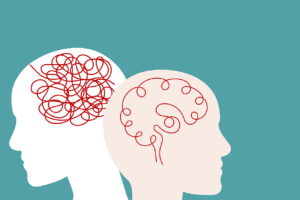
"Neuroplasticity is often compared to paths or hiking trails; we have habits that are analogous to well-traveled routes. The goal with neuroplasticity and cognitive reserve is to walk the less-traveled path to make that one stronger." – Addison Hobbs
Exercising an aging brain
The global population is living longer, which has created a scientific imperative to understand the aging brain and what can be done to mitigate any potential negative cognitive outcomes that accompany aging. In terms of non-pharmaceutical approaches for dealing with healthy and pathologically aging brains, concepts such as neuroplasticity and cognitive reserve are at the forefront.
So, what is neuroplasticity and cognitive reserve?
Neuroplasticity
Neuroplasticity is the ability of the brain to change both in terms of its structure and function throughout the lifespan. It is a relatively new idea in the field of neuroscience, as it was thought that once the brain was fully developed, no new neurons would form. The idea that the brain can change, adapt, and develop new neurons (neurogenesis), even as we age, is giving scientists insight into how the brain functions over the course of one’s life. This is great news, because we can choose lifestyles that support the complex neural networks which give rise to healthy cognition.
Cognitive Reserve
Cognitive reserve is the ability to resist disease or age-related declines in cognitive functioning. A higher cognitive reserve could mean that it takes more damage to areas of the brain to reveal a cognitive deficit. In a sense, it describes the brain’s resilience to decline. Research on cognitive reserve has boomed in the last decade, showing that social activities, physical exercise, and education can improve your cognitive reserve.
Second Language
One non-invasive option to promote higher cognitive reserve and combat the effects of age-related diseases, such as Alzheimer’s or Parkinson’s diseases, is to learn a second language. It has been found that bilingualism can improve executive functioning (planning, control, focus, decision making), memory, and cognitive flexibility. It is well-known that the earlier you learn a second language, the better. However, research on the bilingual advantage, as it pertains to age-related diseases, reveal experience-based structural differences in the brain. What this means is that the bilingual brain can undergo structural changes as a result of an individual switching between languages. Those structural changes can improve cognitive functioning across the lifespan. Those differences are under the spotlight in older individuals, when some types of cognitive functioning may not be at their peak.
Neuroimaging and cognitive psychology studies have determined that the bilingual brain undergoes a language experience which can result in improved functional connectivity (i.e., higher efficiency). The big idea here? It is never too late to learn something new, and learning a second language can lead to cognitive benefits and healthy aging.
Lifestyle and Exercise
Physical activity, diet, environmental stimulation, and education are considered fundamental components of a healthy lifestyle. As it pertains to older individuals, those who engage in less sedentary behavior have been shown to have more neuroplasticity in the motor cortex. More physical activity benefits one’s mental health and is likely to support brain health in older individuals. Wellness is clearly multi-faceted, regardless of your age. It is important to keep moving and keep learning.
As the human brain ages, our genetics are influenced by the outside world and lifestyle choices. This can ultimately affect the neuroplasticity, cognitive reserve, and memory capacity of an individual. Although a healthy diet, exercise, and bilingual abilities are not guaranteed to prevent Alzheimer’s disease, there is evidence that these strategies are able to maintain neuroprotective mechanisms, which can work to combat normal and abnormal neuronal cell death processes. Learning something new, stepping outside the box, and finding enriching opportunities can be incredibly rewarding on multiple levels.
From Scientific Exploration to Application
An aging population incentivizes research aimed at curbing cognitive changes that accompany both healthy and pathological brain atrophy. As aging brain diseases become more prevalent, it is worthwhile to consider and implement lifestyle choices that will promote neuroplasticity and more cognitive reserve.
There are companies such as the Neuroplastic Functional Institute that are finding out how to tap into the brain and equip individuals with the means necessary to be in charge of their own neuroplasticity journey. In all, choosing an enriched environment full of learning opportunities and a healthy lifestyle might not only improve your quality of life, but your brain health as well.
ABOUT THE AUTHORS
Addison Hobbs received her B.S. degree in Cognitive and Behavioral Neuroscience from CSU in 2020. She is now a STEM Educator with the Aspen Science Center on the Western Slope, and aspires to return to CSU for a master’s and Ph.D. in developmental psychology.





